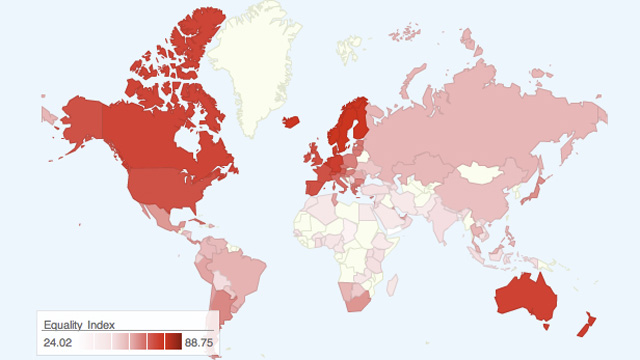Global Growth Depends on Promoting Women

Karl Marx said that everyone looks the same when viewed through the lens of capital: race, class, age, disability, etc. are equalized under umbrella terms like “rate of marginal productivity.” As nations search for ways to maintain economic growth, they will prove Marx right, at least when it comes to employing women.
As Saadia Zahidi, director of constituents at the World Economic Forum, explains, gaps in public services available to women are closing, but women still lack a participatory voice in economic and political matters:
“Ninety six percent of health gaps have been closed; 93% of education gaps have been closed. Only about 59% of economic participation gap and only 18% of the political empowerment gap [have been closed]. So what we find is that … women are starting to be as healthy and almost as educated as men. And yet they are not being channeled into the economy and not able to participate in decision-making. So that’s an immense loss in the global economy.”
India, China, Japan, and even the United States are redoubling their efforts to integrate women into the workforce. Perhaps the greatest room for progress is in India, where Prime Minister Narendra Modi’s call for women’s education parallels his attempt to end the epidemic of rape.
There is also a strong bias in favor of boys among Indian villagers such that substantially fewer girls are being born. To help remedy this, the national government is prepared to give financial support to villages that restore a more balanced boy/girl ratio.
In Japan, Prime Minister Shinzo Abe recently declared a goal of creating 400,000 new places at daycare centers across the country, freeing mothers to pursue part- or full-time jobs during the day. As Zahidi explained to Big Think:
“It’s a waste of the investment that companies have made in having those women for five or 10 years in their systems and then simply losing out on that talent because they’re unable to find a mechanism to allow them to combine work and family.”
In China and the United States, where females have already entered the workforce en masse, special efforts will concentrate on promoting more women into the levels of upper management.
Read more at the Christian Science Monitor.
Photo credit: Shutterstock





